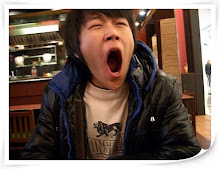2010년 6월 12일 토요일
Mara island
Marado or Mara Island is a tiny treeless island 11 km off the south coast of Jeju, in southernmost South Korea, having an area of 0.3 km². It is home to about 90 people, and has long been known for its population being composed of strong women and docile men. It's becoming a popular tourist destination, thanks to the many unusual rock formations, and is connected to the mainland by two regular ferries and numerous excursion boats. Mara-do is within the administrative boundaries of Daejeong Township(Daejeong-eup) in Seogwipo City, and is included, along with Gapa Island(Gapado), in Gapa-ri, and is South Korea's southernmost point. Because of its subtropical marine habitat the island is a natural reserve. It was designated as National Monument no. 423 on July 18, 2000. Marado was originally uninhabited. It was known as Keumdo which means forbidden island. According to a Choson Ilbo article published by Lee Kyu-tae in 1967, the island was first occupied by a woman named Kim Seong-oh and her brothers in 1880. As a poor peasant with no land to farm, Kim Seong-oh decided to move to the island when her father mentioned about the island on his deathbed. So Kim left Jeju with her two brothers, farming tools, and some seeds. They had to circle the island around three times, because they couldn't find a place to dock their boat. After about 10 years, they were joined by two stranded fishermen from Torishima in the Kingdom of Ryukyu. However, documents from Jeju county also had another story on Marado. According to this story, the first residents came to live on Marado in 1883. One Mr. Kim originally living in Daejeong gol, a small village in Jeju, ran through his all fortune. His relatives proposed to let them move to Marado. Sim Hyun Taek, pastor of Jeju at that time, permitted them to do so, and Marado became inhabited for the first time. After independence, it was administered by Gapa-ri, Daejeong-eup of Jeju, and registered as an independent township called Marari.
Ulleung-Do

Favorite activities for tourists are hiking, fishing, and eating hoe (a Korean raw fish dish). Sightseeing boats make regular three-hour circuits about Ulleungdo, departing from the harbor at Dodong and passing by all the points of interest along the coast, including many interesting rock formations and the small neighboring island of Jukdo. Other scenic sites are Seonginbong, the highest peak on the island (984 m); Bongnae waterfall; the "natural icehouse"; and a coastal cliff from which Liancourt Rocks can be discerned in the distance.
2010년 6월 9일 수요일
JEJU

Jeju Island is a volcanic island, dominated by Hanla-san (Hanla Mountain): a volcano 1,950 meters high and the highest mountain in South Korea.The island was created entirely from volcanic eruptions approximately 2 million years ago, during the time period from the Tertiary to the beginning of the Quaternary period, and consists chiefly of basalt and lava. The eruptions took place in the Cenozoic era. It has a humid subtropical climate, warmer than that of the rest of Korea, with four distinct seasons. Winters are cool and dry while summers are hot, humid, and sometimes rainy. There is a crater lake which is the only natural lake in South Korea. An area covering about 12% (224 square kilometers) of Jeju is known as Gotjawal Forest. This area had remained untouched until the 21st century, as its base of ʻAʻa lava made it difficult to develop for agriculture. Because this forest remained untouched for a long time, it has a unique ecology. The forest is the main source of groundwater, the main water source for the half million people of the island, because rainwater penetrates directly into the groundwater aquifer through the cracks of the ‘A’a lava under the forest. Gotjawal forest is considered an internationally important wetland under the Ramsar Convention by some researchers because it is the habitat of unique species of plants and is the main source of water for the residents, although to date it has not been declared a Ramsar site.
피드 구독하기:
덧글 (Atom)
